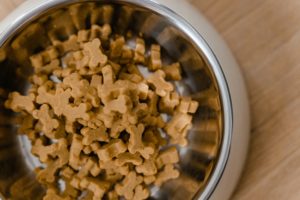4 Ways to Improve Material Handling Efficiency
Comments Off on 4 Ways to Improve Material Handling Efficiency
Material blocks can slow down production, increase costs, and compromise product quality. Unfortunately, it’s not an easy problem to solve.
Many materials have challenging flow properties. Some powders have a tendency to attract moisture and will clump or cake in high humidity. Damp or sticky materials can stick to vessel walls. Others will settle during storage, or aggregate during mixing.
AirSweep is a pneumatic flow aid that can clear material blocks and create on-demand, first in/first out flow. It’s proven effective for even tough materials—and has helped thousands of companies improve material handling efficiency.
Increase Production
Whenever your material flows slowly (or even stops completely) it affects all downstream processes and increases total production time. Sometimes, workers have to stop what they’re doing to clear out the vessel.
This was the problem faced by a minerals processing plant that handles 120,000 tons of material a year. The powders and pebbles would plug the outlets, reducing the flow to a trickle. It took an hour to fill a supersack.
AirSweep eliminated all plugging in the outlets and reduced the filling of supersacks from one hour to two minutes for a 3000% increase in production.
Lower Cost
Poor flow can increase costs because you end up having to throw away entire batches of material. A food company that uses flax and cocoa powder had to throw up to 40 pounds of mixture away a day, and even had to pay to have it hauled away.
Vibrators and fluidizers were ineffective; workers still spent up to one hour a day clearing out material with hammers and sticks.
After AirSweep, everything changed. The system solved 90% of the material retention problems, reduced waste, and improved production speed.
Prevent Safety Hazards
Material handling problems may compromise plant safety, especially if workers have to manually clean out stuck material.
For example, one of the world’s largest building materials companies had issues with hot cement clinker (a hot, sticky, and abrasive material) sticking to vessels and chutes.
Before, workers had to use a bar to break the material, but this was tedious and potentially hazardous. It took just one day to install the AirSweep, and they never had to worry about clogged clinker again.
Improve Quality Control
Companies may decide to use new materials to improve product quality. This is part of innovation and creating a competitive advantage—but it can introduce new problems during production.
An international paint company needed to use a new grade of titanium dioxide. However, the material, which had finer and lighter particles, had a tendency to bridge above the feeder system and on the pneumatic transport vessels.
AirSweep was installed at these critical points, clearing out the blocks and cutting batch time to just 15 minutes.
Find Your Flow and Improve Material Handling Efficiency
Every material, and every stage of production, can present its own flow challenges. AirSweep can help. Contact us for a customized solution and clear material blocks for good.
AirSweep in the Pet Food Industry
Comments Off on AirSweep in the Pet Food Industry
The pet food industry is growing, reaching a record $103.6 billion dollars in 2022, and is expected to rise in the coming years. Even during the COVID-19 pandemic, owners actually spent 20% to 25% more on their fur baby’s food.
It’s a big opportunity for pet food manufacturers, but unprecedented growth does come with substantial challenges.
Plants have to keep up with the higher production, and meet strict quality standards—not just from discerning pet owners, but industry and state regulatory boards. The Food Safety Modernization Act (FSMA) has even tightened its requirements for the animal food industry, including a hazard plan to prevent spoilage and contamination, and regular plant inspections.
Problems that Affect Pet Food Production
Proper material flow is essential for meeting those goals. It can prevent many problems that can slow down production, and compromise the quality and safety of the product. Sluggish flow and stagnant material can:
- Cause contamination and spoilage. Microorganisms and bacteria can grow in trapped material, or grow on the vessel itself.
- Compromise blend uniformity. Sluggish and erratic flow compromises the proportion of materials, affecting the pet food’s quality and nutritional value.
- Lead to production delays. Any clogged vessel affects downstream processes and can lead to shutdowns for manual cleaning.
- Increase costs. Delayed production can increase manpower hours. Spoiled material and off-spec batches need to be thrown away, and even a single “bad batch” that escapes quality control can lead to product recalls.

Bulk Powders and Solids Used in Pet Food Manufacturing
Pet food is made from meat and meat by-products, cereal grains such as soybean meal and cornmeal, and liquids such as broth, blood, or water. Other materials may be added to improve palatability, consistency, and texture:
- Cereal grains such as cornmeal, soybean meal, barley, bran flakes, cracked wheat
- Starches and thickeners like cellulose, carrageenan
- Flavor enhancers such as fat, fish solubles, protein, or concentrated flavors
- Vitamin and mineral supplements
- Proteinaceous adhesives such as collagen and casein
- Plasticizing agents
- Binders
- Emulsifiers
- Antioxidants to slow down oxidation and rancidity
- Preservatives to prevent the growth of bacteria and mold
Unfortunately, many of these materials can be very difficult to handle, because of a tendency to form fines, segregate during mixing, or clump when exposed to moisture.
These materials can become compact during storage, and form problematic flow patterns in silos and hoppers. Bridging, arching, and ratholing are very common. And for moist or sticky formulas such as canned food, caking and material residue can plague every step of production.
AirSweep®: The Best Flow Aid for Pet Food
Pet food companies – as well as food and agriculture companies that have similar concerns – use AirSweep to improve material flow.
AirSweep releases high-pressure, high-volume air pulses that sweep all material back into the flow stream. It can be used during production to prevent material blocks and ensure blend uniformity, and between runs to flush vessels completely clean.
AirSweep works with some of the biggest manufacturers of pet food and treats, including one of Canada’s largest dry food manufacturers.
Elmira Pet Products had issues with feed blends bridging in the bottom of the bins. Vibrators and pneumatic hammers didn’t work. Operators still had to hit the bins with sledgehammers and climb into the two-story vessel to clean the receiver.
AirSweep provided on-demand flow and even shortened their cleaning time. They use AirSweep VA-12 units to clear material hang-ups in the dry mix bins, and AirSweep VA-06 units to clear kibble fines above the airlock.
The Proof is in the Flow
AirSweep’s precise air pulses are effective for bulk powders and solids used in the pet food industry. Watch the videos:
AirSweep is also used in other industries to promote on-demand flow of even the most challenging bulk materials. Contact us for more information, or to request a material flow test.
Yoda Would Love the AirSweep Force
Comments Off on Yoda Would Love the AirSweep Force
Happy Star Wars Day!
Today, let’s talk about The Force since Yoda would love the AirSweep Force.
You use force when you hammer your vessels, and some flow aids like vibrators and bin activators will also physically agitate the material.
That’s brute force: strong, but not precise. You still have leftover material. The constant abuse wears out the vessel, and the noise stresses out your workers.
AirSweep also uses force but in a more efficient way. The nozzles release powerful air pulses, when and where you need them. These break up the material blocks and sweep stagnant material back into the flow stream.
And when you use the force, everything flows with ease: your material, your process, and your entire workday. Watch how easy it can get – and if you want to see how it will work in your plant, we can send you more information and a customized proposal.
As Yoda would say, “Do. Or do not. There is no try.” Read about how AirSweep succeeded where all other flow aids failed.
May The Force Be With You.
Happy (Less) Labor Day!
Comments Off on Happy (Less) Labor Day!This International Labor Day, we’d like to thank all our distributors for all your hard work. You have helped us bring AirSweep to all parts of the world, and serve thousands of clients from every industry.
The Control Concepts team is here to help you succeed and make your job easier. If you haven’t already, please check the distributor portal for resources like:
- AirSweep Certificate Course to help you familiarize yourself with the system and confidently answer your customers’ questions
- Ready-to-use sales presentations in PowerPoint and PDF formats
- Product brochures, competitor comparisons, and case studies you can email to your prospects
- Videos that demonstrate how the AirSweep works on different materials

We hope these resources can help you with your sales and marketing efforts. Please let us know if your customers have questions or objections that aren’t currently covered. This can help us improve our content, and give you what you need in order to succeed.




